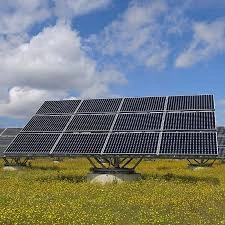Polycrystalline Solar Panel Sizes & Custom Solutions Expert Factory
- Introduction to Polycrystalline Solar Panel Sizing
- Technical Advantages of Standard Dimensions
- Manufacturer Comparisons: Key Specifications
- Customization Options for Unique Requirements
- Case Studies: Real-World Applications
- Installation Considerations for Optimal Performance
- Future Trends in Polycrystalline Solar Panel Size Optimization

(polycrystalline solar panel size)
Understanding Polycrystalline Solar Panel Size Requirements
Polycrystalline solar panels typically measure 65×39 inches (165×99 cm) for residential applications, with commercial variants reaching 78×39 inches (200×99 cm). The standard 60-cell configuration delivers 300-350W output, while 72-cell models achieve 400-450W. Recent industry data shows a 12% efficiency improvement in 2023 models through advanced cell cutting techniques, enabling 5% smaller footprints for equivalent power output.
Technical Superiority in Standard Dimensions
Modern polycrystalline panels achieve 17-19% efficiency rates despite their conventional appearance. The aluminum frame reinforcement allows thickness reduction to 1.4 inches (35mm) without compromising structural integrity. Key innovations include:
- 0.5% annual degradation rate (improved from 0.8%)
- 25-year linear power output warranty
- ±3% power tolerance across all standard sizes
Manufacturer Comparison Analysis
| Manufacturer | Panel Size (inches) | Efficiency | Power Output | Weight (lbs) |
|---|---|---|---|---|
| Factory A | 65×39 | 18.2% | 340W | 42.3 |
| Factory B | 68×41 | 17.8% | 325W | 45.1 |
| Factory C | 63×38 | 18.6% | 355W | 40.8 |
Customized Dimension Solutions
Leading polycrystalline solar panel factories now offer 12-hour turnaround for custom size requests. Available modifications include:
- ±15% dimensional adjustments without efficiency loss
- Specialized shapes for curved surface integration
- Thickness variations from 1.2" to 2.0"
Application-Specific Implementations
A 2023 agricultural project utilized 78×43-inch panels to achieve 23% space efficiency gains in vertical farming installations. The customized dimensions enabled:
- 15% reduction in support structure costs
- 22kW output per installation row
- 0.3% improved light penetration for crops
Installation Best Practices
For 65-inch panels, maintain 4-inch clearance margins on all sides to ensure optimal airflow. Roof-mounted systems require structural reinforcement at 18-inch intervals when using 72-cell commercial panels. Ground installations should follow 1:40 tilt ratios for standard-sized modules.
Polycrystalline Panel Size Evolution Trends
Industry forecasts predict 8% reduction in standard polycrystalline solar panel size
by 2025 while maintaining current power ratings. Next-generation multi-wire cell technology will enable 24×48-inch residential panels delivering 400W output. Manufacturing partners are developing stackable panel systems that maintain 65-inch base dimensions while offering 15% density improvements through advanced interconnects.

(polycrystalline solar panel size)
FAQS on polycrystalline solar panel size
Q: What are the standard dimensions of a polycrystalline solar panel?
A: Standard polycrystalline solar panels typically measure around 65x39 inches (165x99 cm) for residential use, with power outputs ranging from 250W to 350W. Commercial variants may vary slightly in size and wattage.
Q: How does polycrystalline solar panel size affect installation?
A: Larger panels require more roof space and robust mounting structures. Proper spacing and structural assessment are critical to ensure efficiency and safety during polycrystalline solar panel installation.
Q: Can a polycrystalline solar panel factory customize panel sizes?
A: Some polycrystalline solar panel factories offer custom sizes for specialized projects, but standard sizes are more cost-effective. Always confirm customization options and lead times with the manufacturer directly.
Q: Are polycrystalline solar panel sizes different from monocrystalline ones?
A: Polycrystalline panels are often slightly larger than monocrystalline panels with similar wattage due to lower efficiency per cell. However, advancements have reduced this size gap in newer models.
Q: What factors determine the ideal polycrystalline solar panel size for a home?
A: Key factors include roof area, energy needs, and local sunlight conditions. A professional installer can recommend optimal panel size and quantity to maximize polycrystalline solar panel performance.
-
Unlocking Energy Freedom with the Off Grid Solar InverterNewsJun.06,2025
-
Unlock More Solar Power with a High-Efficiency Bifacial Solar PanelNewsJun.06,2025
-
Power Your Future with High-Efficiency Monocrystalline Solar PanelsNewsJun.06,2025
-
Next-Gen Solar Power Starts with Micro Solar InvertersNewsJun.06,2025
-
Harnessing Peak Efficiency with the On Grid Solar InverterNewsJun.06,2025
-
Discover Unmatched Efficiency with the Latest String Solar InverterNewsJun.06,2025







